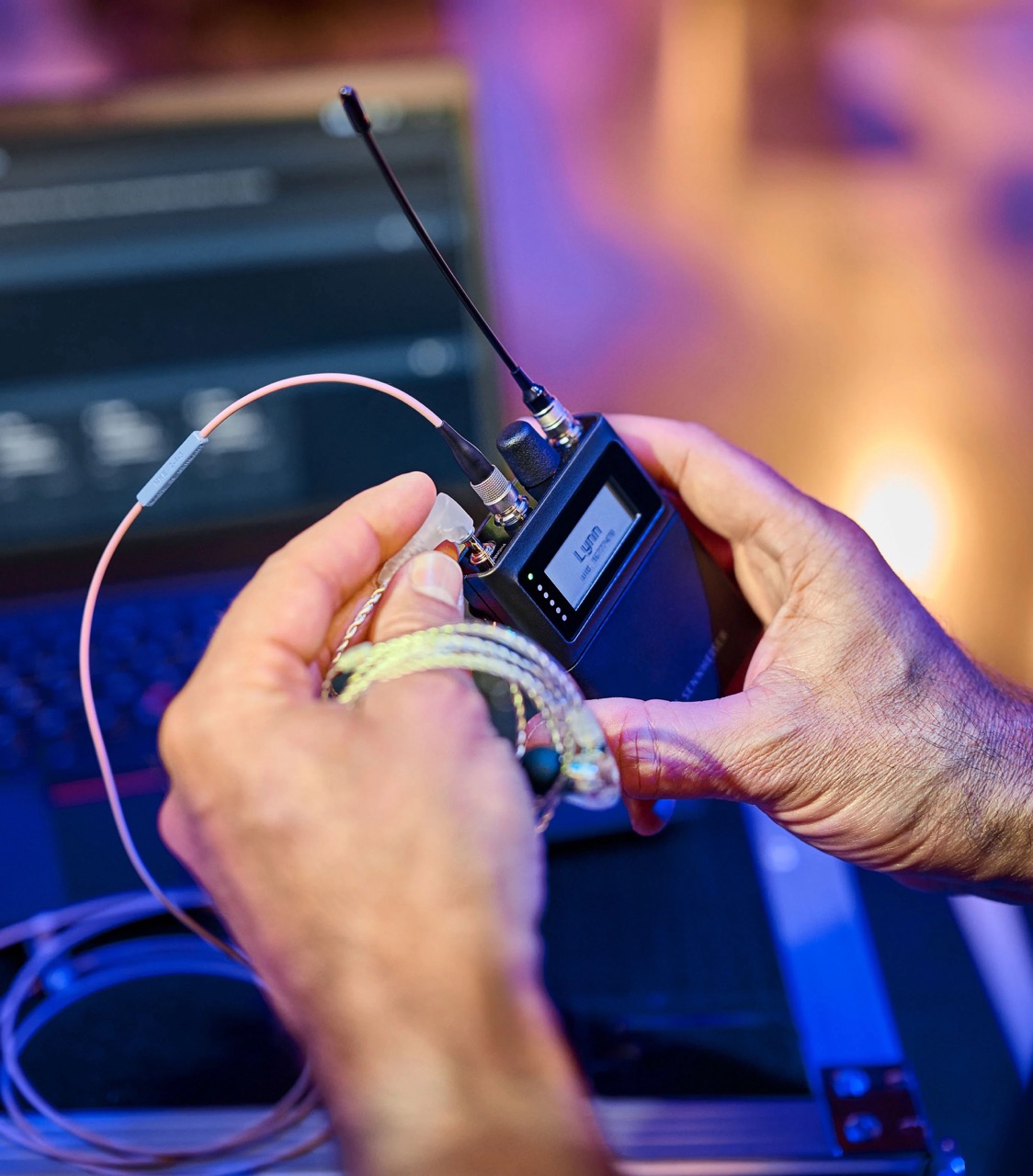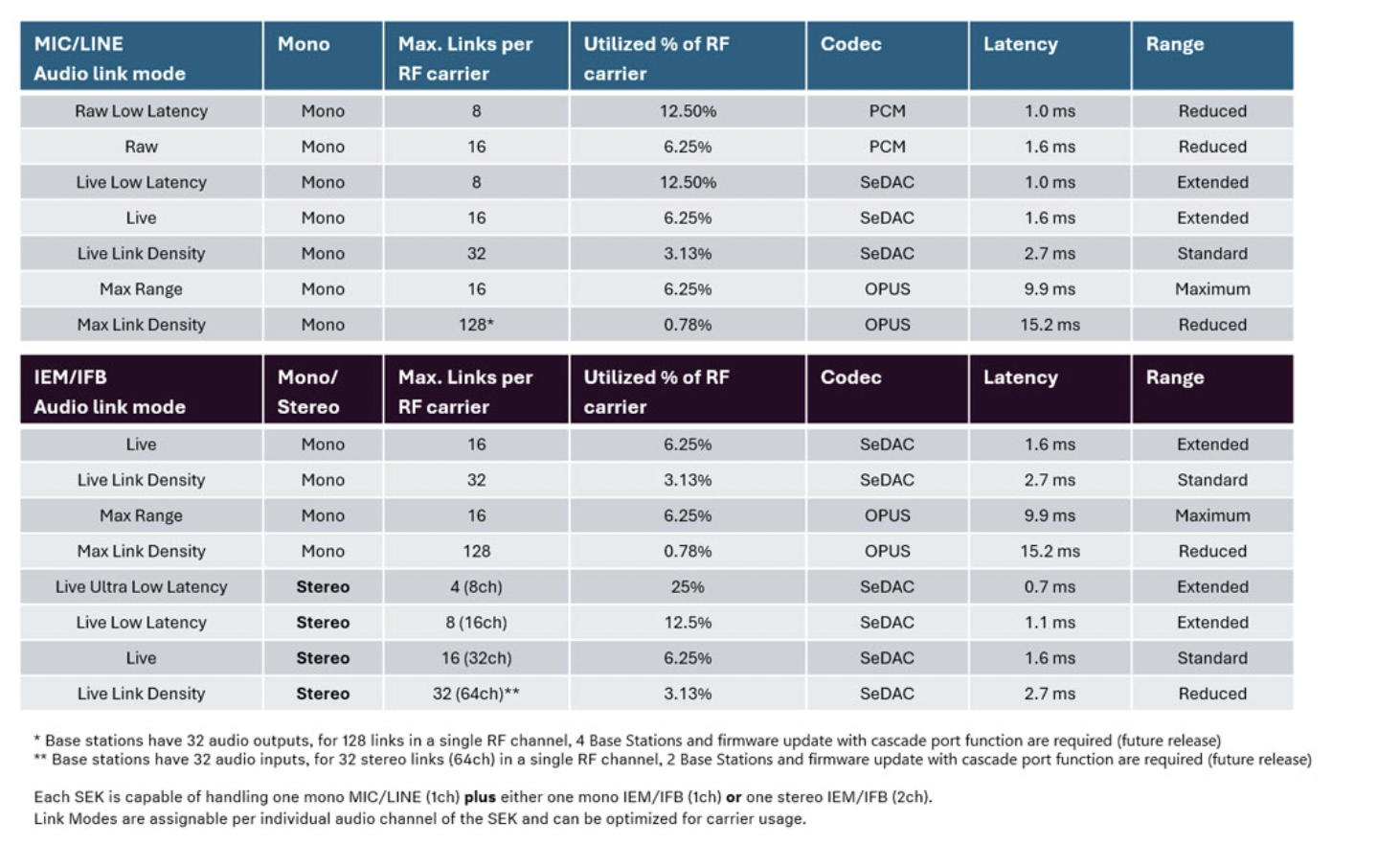Sennheiser’s WMAS Technology - The Future of Wireless Audio?
Wireless audio systems are essential for live events, theaters, and broadcast studios. But as more microphones and in-ear monitors (IEMs) are used, available frequencies become limited. Sennheiser (and also Shure) has introduced WMAS (Wireless Multi-channel Audio System) to solve this, but does it?
WMAS is a broadband wireless technology that combines microphones, IEMs, and remote control into a single RF channel. This makes better use of the radio spectrum and simplifies setup. Unlike traditional systems that use separate narrowband frequencies for each microphone or IEM, WMAS allows multiple audio signals to share the same frequency space efficiently.
The result? More channels, less interference, and a more stable connection. Sound engineers will have more flexibility, and users will experience better audio quality with lower latency. Plus, frequency coordination will become easier, making WMAS a game-changer for professional audio setups.
How Does WMAS Work?
Traditional wireless audio systems use narrowband transmission, meaning each microphone or in-ear monitor (IEM) operates on a dedicated frequency. This takes up a lot of spectrum space, making it harder to add more channels without interference.
WMAS, on the other hand, works with a single broadband RF channel. Instead of assigning a separate frequency to each device, WMAS splits one large frequency band into time slots. Each microphone or IEM gets a time slot for transmitting or receiving, ensuring smooth and efficient operation.
The system is based on OFDM (Orthogonal Frequency Division Modulation), which improves reliability by reducing signal dropouts. It also uses TDD (Time Division Duplex) to allow both sending and receiving signals within the same frequency range. This means microphones and IEMs can work together in a single system without needing separate frequency allocations.

The Key Benefits of WMAS
- More Channels in Less Space
With WMAS, sound engineers can fit more audio channels into a single TV channel (8 MHz wide). This allows 16, 32, or even more channels to operate smoothly without interference. - Easier Frequency Coordination
No more endless frequency planning! A WMAS system only requires one assigned frequency, making setup much faster. The base station scans for available frequencies and assigns them automatically. - Better Reliability and Audio Quality
Thanks to its broadband approach and improved diversity, WMAS offers more stable wireless connections, reducing dropouts even in difficult environments like crowded events. - Lower Latency for In-Ear Monitors (IEMs)
Latency is a big issue for musicians and presenters using IEMs. WMAS significantly reduces audio delay, making real-time monitoring much smoother. - All-in-One Devices
Since WMAS supports both microphones and IEMs in the same frequency band, performers could use a single bodypack for both functions. This means fewer devices, fewer cables, and a simpler setup.
The Future of Wireless Audio?
WMAS is designed to co-exist with existing narrowband systems, meaning professionals can gradually transition to the new technology. It also has built-in interference detection, so engineers can monitor signal quality in real time and avoid disruptions.
With its high channel capacity, low interference, and ease of use, WMAS is set to revolutionize wireless audio for live events, broadcast, and theater productions. As more companies adopt broadband solutions like this, we might soon see a future where frequency struggles become a thing of the past.
FAQ:
1. Battery Life and Power Efficiency
WMAS uses bidirectional communication, meaning devices transmit and receive. This could raise concerns about battery drain. However, manufacturers like Sennheiser have optimized power efficiency, allowing battery life to remain comparable to or even better than current digital wireless systems.
2. Audio Quality – Is It as Good as Analog?
Some engineers still believe analog wireless provides better sound than digital systems. WMAS uses high-quality audio codecs with minimal compression, ensuring transparent, high-fidelity sound. In some cases, it even outperforms traditional narrowband digital systems due to better error correction and reduced dropouts.
3. Intermodulation-Free Operation
One big advantage of WMAS is that it eliminates intermodulation distortion (IMD). Traditional narrowband systems suffer from IMD when multiple transmitters are close together, creating unwanted interference. WMAS does not generate intermodulation, meaning frequencies can be packed more tightly without issues.
4. Will WMAS Work in Any Country?
Regulations vary by region. While WMAS is designed to fit within existing UHF TV bands, different countries allocate spectrum differently. ETSI (Europe) and the FCC (USA) are actively working on regulatory approvals, but users should check local frequency allocations before adopting WMAS.
5. WMAS and Latency – How Low Does It Go?
Latency is a critical factor in live performances. Sennheiser’s implementation of WMAS has demonstrated latencies as low as 1.5 ms, which is competitive with or even better than many existing digital wireless systems. This is especially beneficial for in-ear monitoring (IEM) setups.

The Sennheiser Spectera base station can handle 2 RF carriers out of the box, which means it can support more devices at once. Each RF carrier (or broadband channel) requires its own antenna, so you'll need 2 antennas to manage both. If both RF carriers are filled, you can achieve impressive performance: 16 stereo IEMs at a 1.6ms latency or 32 channels of receive at 2.7ms latency.
Now, while the top modes might have a 15ms latency, which might seem a bit high, let's put that into perspective. The difference between a 1ms latency and a 2.6ms latency is not a huge deal in practical terms—it's like the difference between kneeling in front of a floor monitor and standing a little farther back from it. You can easily walk 10 feet from a monitor without noticing a significant delay, even if that adds a whopping 10ms of latency.
For reference, Shure's Axient system has a latency of 2.0ms (or 2.9ms in high-density mode), while Axient PSM systems have 2.9ms latency for digital transmission and 1.29ms for analog.
This shows that while latency is a factor to consider, it's important to put it into context. In most real-world applications, even a latency of 5-10ms is not going to cause significant issues in performance or sound quality.
BUT,
when the audio signal passes through a digital mixer with additional effects, the latency can add up quickly, especially if there are multiple processing stages involved. Each effect or processing step introduces its own delay, which, when combined with the initial latency from the wireless system, can lead to a noticeable lag in the audio that might be too great to work with in a live situation. This can result in poor timing, especially for musicians or performers who rely on real-time audio feedback.
In contrast, an analog system is generally the best choice for achieving the lowest latency. Analog systems do not introduce the same kind of digital processing delays that digital systems do, making them more immediate and responsive. They also tend to offer a more natural and richer sound quality, which is preferred by many professionals in live sound situations. Without the need for complex digital conversions and processing, analog systems deliver a more direct and transparent signal, which is why they are still favored for their simplicity, reliability, and sound quality in high-stakes environments like live performances.

